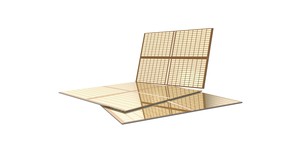
Memory specialist Micron and Cypress Semiconductor subsidiary AgigA Technology have announced a partnership to bring non-volatile memory modules to the market for drop-in data protection.
Based on technology developed by AgigA, the non-volatile dual inline memory modules (NVDIMMs) combine DRAM and NAND flash components on a single standard board. During normal use, the NVDIMMs appear to the system as straightforward dynamic memory offering the same high-speed data throughput and low-latency access as any other DIMM. Should the system lose power, however, the contents of the DRAM modules is automatically saved to an on-board NAND flash area as the chips are powered by supercapacitors built into the module.
When power is reapplied to the system, the contents of the NAND flash modules is shunted back over to the DRAM modules, restoring the memory to the same state as prior to the loss of power. Total time to restore the data, AgigA claims, is measured in seconds, while the supercapacitors can recharge from empty in mere minutes ready to protect the system once again.
'From our start in 2007, we have always believed that NVDIMM technology could be a game-changer for enterprise-class server and storage solutions,' claimed Ron Sartore, president and chief executive of AgigA, of his company's technology. 'Establishing a strategic partnership with Micron allows us to drive that vision toward mass market enablement.'
Initially, the company is to target enterprise markets with its technology, producing modules that provide backup for RAID boards, data logging and deduplication systems, metadata processing, and security systems. Should the technology take off, these modules could trickle down to the servers themselves - although here things get tricky, as the contents of cache RAM in the CPU and other regions of the system is also lost during power failure, preventing the NVDIMMs from invisibly restoring the system state as with simpler implementations.
Eventually, of course, the technology should appear in consumer-grade products - and it's there it could make a real difference. Currently, systems have two main 'sleep' states: suspend-to-RAM (S3) and suspend-to-disk (S4). The former is near-instantaneous, but requires the a small amount of energy is supplied to keep the system memory running. The latter allows the system to restore its state even after prolonged periods of no power, but can take a long time to enter and exit - potentially measured in minutes with systems that have a lot of RAM. NVDIMMs could potentially offer a hybrid state between the two: data in RAM is written to the NAND flash area after the system powers off, providing S4-like protection from power loss with S3-like performance.
For now, however, the technology remains an esoteric curiosity available only to those with deep pockets - and with alternative memory types including spintronics and memristors promising to create non-volatile memory that can perform like DRAM any day now, Micron and AgigA are going to have to work quickly to get this technology into the mainstream market.
Based on technology developed by AgigA, the non-volatile dual inline memory modules (NVDIMMs) combine DRAM and NAND flash components on a single standard board. During normal use, the NVDIMMs appear to the system as straightforward dynamic memory offering the same high-speed data throughput and low-latency access as any other DIMM. Should the system lose power, however, the contents of the DRAM modules is automatically saved to an on-board NAND flash area as the chips are powered by supercapacitors built into the module.
When power is reapplied to the system, the contents of the NAND flash modules is shunted back over to the DRAM modules, restoring the memory to the same state as prior to the loss of power. Total time to restore the data, AgigA claims, is measured in seconds, while the supercapacitors can recharge from empty in mere minutes ready to protect the system once again.
'From our start in 2007, we have always believed that NVDIMM technology could be a game-changer for enterprise-class server and storage solutions,' claimed Ron Sartore, president and chief executive of AgigA, of his company's technology. 'Establishing a strategic partnership with Micron allows us to drive that vision toward mass market enablement.'
Initially, the company is to target enterprise markets with its technology, producing modules that provide backup for RAID boards, data logging and deduplication systems, metadata processing, and security systems. Should the technology take off, these modules could trickle down to the servers themselves - although here things get tricky, as the contents of cache RAM in the CPU and other regions of the system is also lost during power failure, preventing the NVDIMMs from invisibly restoring the system state as with simpler implementations.
Eventually, of course, the technology should appear in consumer-grade products - and it's there it could make a real difference. Currently, systems have two main 'sleep' states: suspend-to-RAM (S3) and suspend-to-disk (S4). The former is near-instantaneous, but requires the a small amount of energy is supplied to keep the system memory running. The latter allows the system to restore its state even after prolonged periods of no power, but can take a long time to enter and exit - potentially measured in minutes with systems that have a lot of RAM. NVDIMMs could potentially offer a hybrid state between the two: data in RAM is written to the NAND flash area after the system powers off, providing S4-like protection from power loss with S3-like performance.
For now, however, the technology remains an esoteric curiosity available only to those with deep pockets - and with alternative memory types including spintronics and memristors promising to create non-volatile memory that can perform like DRAM any day now, Micron and AgigA are going to have to work quickly to get this technology into the mainstream market.

MSI MPG Velox 100R Chassis Review
October 14 2021 | 15:04








Want to comment? Please log in.